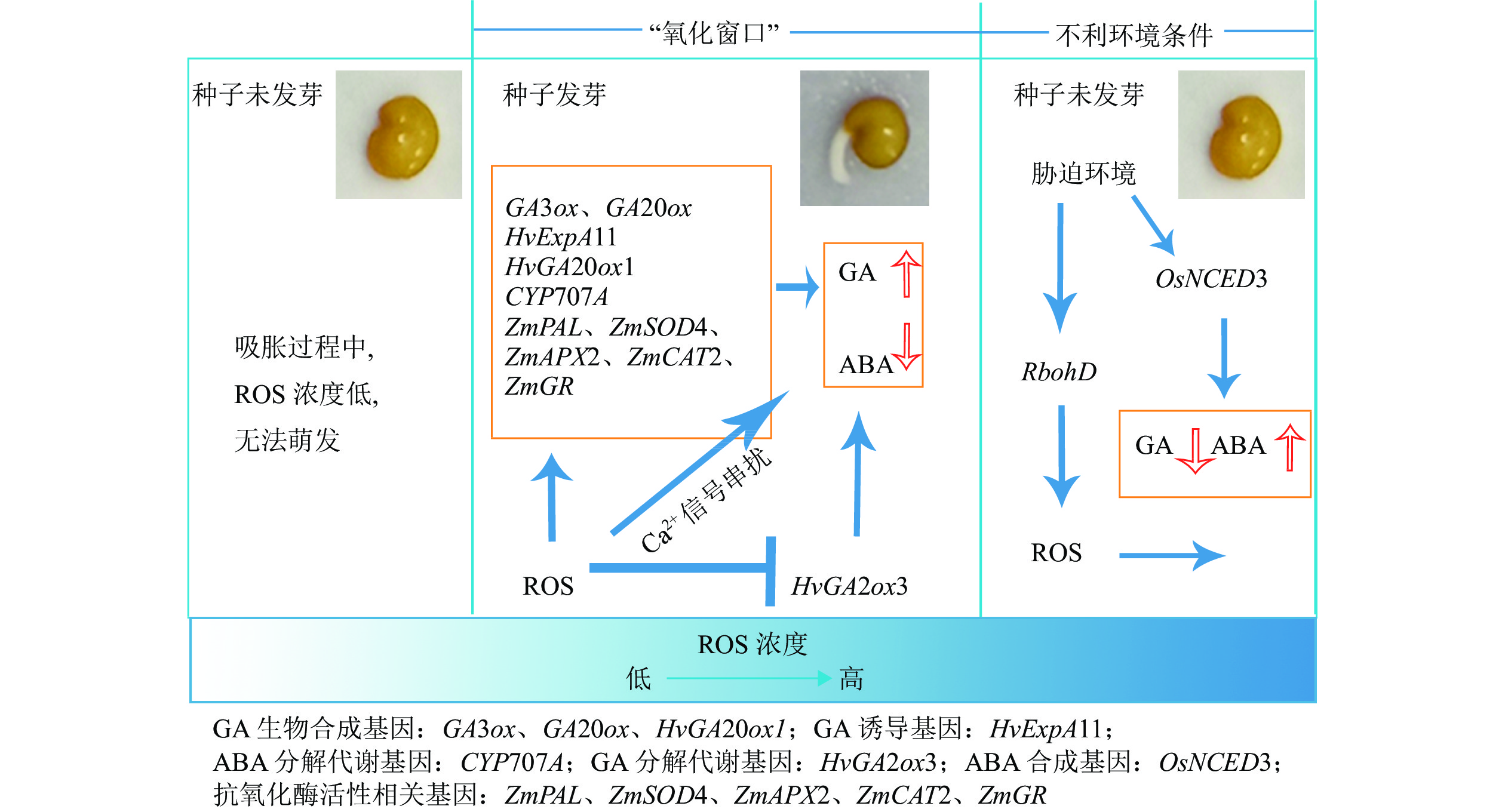| [1] |
胡宗英, 孙泽威. 植物种子在农业中的重要地位和作用[J]. 安徽农学通报, 2013, 19(24): 46 − 47. |
HU Zongying, SUN Zewei. Important position and role in agriculture for seed [J]. Anhui Agricultural Science Bulletin, 2013, 19(24): 46 − 47. |
| [2] |
WEITBRECHT K, MÜLLER K, LEUBNER-METZGER G. First of the mark: early seed germination [J]. Journal of Experimental Botany, 2011, 62(10): 3289 − 3309. |
| [3] |
DORONE Y, BOEYNAEMS S, FLORES E, et al. A prion-like protein regulator of seed germination undergoes hydration-dependent phase separation [J]. Cell, 2021, 184(16): 4284 − 4298. |
| [4] |
PEREIRA A, OLIVERIRA H C, FRACETO L F, et al. Nanotechnology potential in seed priming for sustainable agriculture [J]. Nanomaterials, 2021, 11(2): 267 − 276. |
| [5] |
BOTHA F C, POTGIETER G P, BOTHA A M. Respiratory metabolism and gene expression during seed germination [J]. Plant Growth Regulation, 1992, 11(3): 211 − 224. |
| [6] |
BAILLY C. The signalling role of ROS in the regulation of seed germination and dormancy [J]. Biochemical Journal, 2019, 476(20): 3019 − 3032. |
| [7] |
HAN Chao, YANG Pingfang. Studies on the molecular mechanisms of seed germination [J]. Proteomics, 2015, 15(10): 1671 − 1679. |
| [8] |
房艺. 拟南芥NFYA1在种子萌发阶段的功能[D]. 济南: 山东农业大学, 2012. |
FANG Yi. The Function of Arabidopsis NFYA1 Germination [D]. Ji’nan: Shandong Agricultural University, 2012. |
| [9] |
ORACK K, STAWSKA M. Cellular recycling of proteins in seed dormancy alleviation and germination [J/OL]. Frontiers in Plant Science, 2016(7): 1128[2022-11-02]. doi:10.3389/fpls.2016.01128. |
| [10] |
SRIVASTAVA A K, KUMAR J S, SUPRASANNA P. Seed“primeomics”: plants memorize their germination under stress [J]. Biological Reviews of the Cambridge Philosophical Society, 2021, 96(5): 1723 − 1743. |
| [11] |
NÉE G, XIANG Yong, SOPPE W J. The release of dormancy, a wake-up call for seeds to germinate [J]. Current Opinion in Plant Biology, 2017, 35: 8 − 14. |
| [12] |
CHEN Huhui, RUAN Jiuxiao, CHU Pu, et al. AtPER1 enhances primary seed dormancy and reduces seed germination by suppressing the ABA catabolism and GA biosynthesis in Arabidopsis seeds [J]. The Plant Journal, 2020, 101(2): 310 − 323. |
| [13] |
GONG Xuemei, BEWLEY J D. A GAMYB-like gene in tomato and its expression during seed germination [J]. Planta, 2008, 228(4): 563 − 572. |
| [14] |
LI Caixia, DONG Shaoyun, BECKLES D M, et al. The qLTG1.1 candidate gene CsGAI regulates low temperature seed germination in cucumber [J]. Theoretical and Applied Genetics, 2022, 135(8): 2593 − 2607. |
| [15] |
BUNSICK M, TOH S, WONG C, et al. SMAX1-dependent seed germination bypasses GA signalling in Arabidopsis and Striga [J]. Nature Plants, 2020, 6(6): 646 − 652. |
| [16] |
DVORAKOVA M, HYLOVA A, SOUDEK P, et al. Triazolide strigolactone mimics as potent selective germinators of parasitic plant Phelipanche ramose [J]. Pest Management Science, 2019, 75(7): 2049 − 2056. |
| [17] |
黎家, 李传友. 新中国成立70年来植物激素研究进展[J]. 中国科学(生命科学), 2019, 49(10): 1227 − 1281. |
LI Jia, LI Chuanyou, Seventy-year major research progress in plant hormones by Chinese scholars [J]. Scientia Sinica Vitae, 2019, 49(10): 1227 − 1281. |
| [18] |
WASZCZAK C, CARMODY M, KANGACTIVE J. Reactive oxygen species in plant signaling [J]. Annual Review of Plant Biology, 2018, 69: 209 − 236. |
| [19] |
GOMES M P, GARCIA Q S. Reactive oxygen species and seed germination [J]. Biologia, 2013, 68: 351 − 357. |
| [20] |
GUO Ziting, ZHAO Jinjin, WANG Meiping, et al. Sulfur dioxide promotes seed germination by modulating reactive oxygen species production in maize [J/OL]. Plant Science, 2021, 312: 111027[2022-11-02]. doi: 10.1016/j.plantsci.2021.111027. |
| [21] |
LUO Xiaofeng, DAI Yujia, ZHENG Chuan, et al. The ABI4-RbohD/VTC2 regulatory module promotes reactive oxygen species (ROS) accumulation to decrease seed germination under salinity stress [J]. New Phytologist, 2021, 229(2): 950 − 962. |
| [22] |
BAILLY C. Active oxygen species and antioxidants in seed biology [J]. Seed Science Research, 2004, 14(2): 93 − 107. |
| [23] |
BAILLY C, EL-MAAROUF-BOUTEAU H, CORBINEAU F. From intracellular signaling networks to cell death: the dual role of reactive oxygen species in seed physiology [J]. Comptes Rendus Biologies, 2008, 331(10): 806 − 814. |
| [24] |
ORACZ K, KARPIÑSKI S. Phytohormones signaling pathways and ROS involvement in seed germination [J/OL]. Frontiers in Plant Science, 2016(7): 864[2022-11-02]. doi:10.3389/fpls.2016.00864. |
| [25] |
FAROOQ M A, ZHANG Xiaomeng, ZAFAR M M, et al. Roles of reactive oxygen species and mitochondria in seed germination [J/OL]. Frontiers in Plant Science, 2021(12): 781734[2022-11-02]. doi: 10.3389/fpls.2021.781734. |
| [26] |
张梦如, 杨玉梅, 成蕴秀, 等. 植物活性氧的产生及其作用和危害[J]. 西北植物学报, 2014, 34(9): 1916 − 1926. |
ZHANG Mengru, YANG Yumei, CHENG Yunxiu, et al. Generation of reactive oxygen species and their functions and deleterious effects in plants [J]. Acta Botanica Boreali-Occidentalia Sinica, 2014, 34(9): 1916 − 1926. |
| [27] |
KRANNER I, ROACH T, BECKETT R P, et al. Extracellular production of reactive oxygen species during seed germination and early seedling growth in Pisum sativum [J]. Journal of Plant Physiology, 2010, 167(10): 805 − 811. |
| [28] |
MURPHY M P. How mitochondria produce reactive oxygen species [J]. Biochemical Journal, 2009, 417(1): 1 − 13. |
| [29] |
WINTERBOURN C C. The biological chemistry of hydrogen peroxide [J]. Methods in Enzymology, 2013, 528: 3 − 25. |
| [30] |
RICHARDS S L, WILKINS K A, SWARBRECK S M, et al. The hydroxyl radical in plants: from seed to seed [J]. Journal of Experimental Botany, 2015, 66(1): 37 − 46. |
| [31] |
SINGH A. Chemical and biochemical aspects of superoxide radicals and related species of activated oxygen [J]. Canadian Journal of Physiology and Pharmacology, 1982, 60(11): 1330 − 1345. |
| [32] |
ORTEGA-VILLASANTE C, BURÉN S, BARÓN-SOLA Á, et al. In vivo ROS and redox potential fluorescent detection in plants: present approaches and future perspectives [J]. Methods, 2016, 109: 92 − 104. |
| [33] |
CORPAS F J, BARROSO J B, del RÍO L A. Peroxisomes as a source of reactive oxygen species and nitric oxide signal molecules in plant cells [J]. Trends in Plant Science, 2001, 6(4): 145 − 150. |
| [34] |
杨利, 王波, 李文姣, 等. 干旱胁迫下ROS的产生、清除及信号转导研究进展[J]. 生物技术通报, 2021, 37(4): 194 − 203. |
YANG Li, WANG Bo, LI Wenjiao, et al. Research progress on production, scavenging and signal transduction of ROS under drought stress [J]. Biotechnology Bulletin, 2021, 37(4): 194 − 203. |
| [35] |
AHMAD P, JALEEL C A, SALEM M A. Roles of enzymatic and nonenzymatic antioxidants in plants during abiotic stress [J]. Critical Reviews in Biotechnology, 2010, 30(3): 161 − 175. |
| [36] |
皮明雪. BnTR1在甘蓝型油菜抗旱和耐盐中的功能鉴定[D]. 扬州: 扬州大学, 2017. |
PI Mingxue. Functional Identification of BnTR1 in Drought Resistance and Salt Tolerance of Brassica napus [D]. Yangzhou: Yangzhou University, 2017. |
| [37] |
丁福章, 李继新, 雷波, 等. 超氧化物歧化酶在烟草上的应用研究进展[J]. 安徽农业科学, 2008(5): 1897 − 1898, 1914. |
DING Fuzhang, LI Jixin, LEI Bo, et al. Research progress on application of superoxide dismutases in tobacco [J]. Journal of Anhui Agricultural Sciences, 2008(5): 1897 − 1898, 1914. |
| [38] |
HUCHZERMEYER B, MENGHANI E, KHARDIA P, et al. Metabolic pathway of natural antioxidants, antioxidant enzymes and ROS providence[J/OL]. Antioxidants, 2022, 11(4): 761[2022-10-20]. doi: 10.3390/antiox11040761. |
| [39] |
ANJUM N A, SHARMA P, GILL S S, et al. Catalase and ascorbate peroxidase-representative H2O2-detoxifying heme enzymes in plants [J]. Environmental Science and Pollution Research, 2016, 23(19): 19002 − 19029. |
| [40] |
MANSOOR S, ALIWANI O, LONE J K, et al. Reactive oxygen species in plants: from source to sink [J/OL]. Antioxidants, 2022, 11(2): 225[2022-11-02]. doi: 10.3390/antiox11020225. |
| [41] |
GALLIE D R. L-ascorbic acid: a multifunctional molecule supporting plant growth and development [J/OL]. Scientifica, 2013: 795964[2022-11-02]. doi: 10.1155/2013/795964. |
| [42] |
周亚洁, 陈朋, 周鑫惠, 等. 不同品种小麦种子萌发及幼苗发育对外源过氧化氢处理的响应[J]. 湖北农业科学, 2022, 61(16): 5 − 11, 17. |
ZHOU Yajie, CHEN Peng, ZHOU Xinhui, et al. Response of seed germination and seedling development of different wheat varieties to the treatment of exogenous H2O2 [J]. Hubei Agricultural Sciences, 2022, 61(16): 5 − 11, 17. |
| [43] |
张雅婷. 外源过氧化氢预处理对花生种子低温萌发的影响[D]. 合肥: 安徽农业大学, 2020. |
ZHANG Yating. Effect of Exogenous H2O2 Pre-treatment on Low Temperature Germination of Peanut Seeds [D]. Hefei: Anhui Agricultural University, 2020. |
| [44] |
冯潇. 过氧化氢对白沙蒿种子萌发的影响[D]. 兰州: 兰州大学, 2019. |
FENG Xiao. The Effect of H2O2 on Seed Germination of Artemisia sphaerocephala [D]. Lanzhou: Lanzhou University, 2019. |
| [45] |
ISHIBASHI Y, AOKI N, KASA S, et al. The interrelationship between abscisic acid and reactive oxygen species plays a key role in barley seed dormancy and germination [J/OL]. Frontiers in Plant Science, 2017, 8: 275[2022-11-02]. doi: 10.3389/fpls.2017.00275. |
| [46] |
BAHIN E, BAILLY C, SOTTA B, et al. Crosstalk between reactive oxygen species and hormonal signalling pathways regulates grain dormancy in barely [J]. Plant,Cell and Environment, 2011, 34(6): 980 − 993. |
| [47] |
YU Yonglong, ZHEN Shoumin, WANG Shu, et al. Comparative transcriptome analysis of wheat embryo and endosperm responses to ABA and H2O2 stresses during seed germination [J/OL]. BMC Genomics, 2016, 17: 97[2022-11-02]. doi: 10.1186/s12864-016-2416-9. |
| [48] |
LIU Yinggao, YE Nenghui, LIU Rui, et al. H2O2 mediates the regulation of ABA catabolism and GA biosynthesis in Arabidopsis seed dormancy and germination [J]. Journal of Experimental Botany, 2010, 61(11): 2979 − 2990. |
| [49] |
BARBA-ESPIN G, NICOLAS E, ALMANSA M S, et al. Role of thioproline on seed germination: interaction ROS-ABA and effects on antioxidative metabolism [J]. Plant Physiology and Biochemistry, 2012, 59: 30 − 36. |
| [50] |
LIU Juan, HASANUZZAMAN M, WEN Huili, et al. High temperature and drought stress cause abscisic acid and reactive oxygen species accumulation and suppress seed germination growth in rice [J]. Protoplasma, 2019, 256(5): 1217 − 1227. |
| [51] |
NOURIMAND M, TODD C D. There is a direct link between allantoin concentration and cadmium tolerance in Arabidopsis [J]. Plant Physiology and Biochemistry, 2019, 135: 441 − 449. |
| [52] |
GOMES M P, CARNEIRO M M L C, NOGUEIRA C O G, et al. The system modulating ROS content in germinating seeds of two Brazilian savanna tree species exposed to As and Zn [J]. Acta Physiologiae Plantarum, 2013, 35: 1011 − 1022. |
| [53] |
ISHIBASHI Y, TAWARATSUMIDA T, ZHENG Shaohui, et al. NADPH oxidases act as key enzyme on germination and seedling growth in barley (Hordeum vulgare L. ) [J]. Plant Production Science, 2010, 13(1): 45 − 52. |
| [54] |
BAEK D, CHA J Y, KANG S, et al. The Arabidopsis a zinc finger domain protein ARS1 is essential for seed germination and ROS homeostasis in response to ABA and oxidative stress [J/OL]. Frontiers in Plant Science, 2015, 6: 963[2022-11-02]. doi: 10.3389/fpls.2015.00963. |
| [55] |
ISHIBASHI Y, KASA S, SAKAMOTO M, et al. A role for reactive oxygen species produced by NADPH oxidases in the embryo and aleurone cells in barley seed germination [J/OL]. PLoS One, 2015, 10(11): e0143173[2022-11-02]. doi: 10.1371/journal.pone.0143173. |
| [56] |
MORSCHER F, KRANNER I, ARC E, et al. Glutathione redox state, tocochromanols, fatty acids, antioxidant enzymes and protein carbonylation in sunflower seed embryos associated with after-ripening and ageing [J]. Annals of Botany, 2015, 116(4): 669 − 678. |
| [57] |
El-MAAROUF-BOUTEAU H, SAJJAD Y, BAZIN J, et al. Reactive oxygen species, abscisic acid and ethylene interact to regulate sunflower seed germination [J]. Plant,Cell and Environment, 2015, 38(2): 364 − 374. |
| [58] |
ZHANG Yifei, SHI Haojie, DENG Benliang. Mutagen-induced phytotoxicity in maize seed germination is dependent on ROS scavenging capacity [J/OL]. Scientific Reports, 2018, 8(1): 14078[2022-11-02]. doi: 10.1038/s41598-018-32271-y. |
| [59] |
HE Yong, YE Zhenxiao, YING Quansheng, et al. Glyoxylate cycle and reactive oxygen species metabolism are involved in the improvement of seed vigor in watermelon by exogenous GA3 [J]. Scientia Horticulturae, 2019, 247: 184 − 194. |
| [60] |
LI Zhan, GAO Yue, ZHANG Yuchan, et al. Reactive oxygen species and gibberellin acid mutual induction to regulate tobacco seed germination [J/OL]. Frontiers in Plant Science, 2018, 9(9): 1279[2022-11-02]. doi: 10.3389/fpls.2018.01279. |
| [61] |
SINGH K L, CHAUDHURI A, KAR R K. Role of peroxidase activity and Ca2+ in axis growth during seed germination [J]. Planta, 2015, 242(4): 997 − 1007. |
| [62] |
LI Wenyan, CHEN Bingxian, CHEN Zhongjian, et al. Reactive oxygen species generated by NADPH oxidases promote radicle protrusion and root elongation during rice seed germination [J/OL]. International Journal Mololecular Science, 2017, 18(1): 110[2022-11-02]. doi: 10.3390/ijms18010110. |
| [63] |
ZHANG Yu, CHEN Bingxian, XU Zhenjiang, et al. Involvement of reactive oxygen species in endosperm cap weakening and embryo elongation growth during lettuce seed germination [J]. Journal of Experimental Botany, 2014, 65(12): 3189 − 3200. |
| [64] |
ORTIZ-ESPIN A, IGLESIAS-FERNÁNDEZ R, CALDERÓN A, et al. Mitochondrial AtTrxo1 is transcriptionally regulated by AtbZIP9 and AtAZF2 and affects seed germination under saline conditions [J]. Journal of Experimental Botany, 2017, 68(5): 1025 − 1038. |
| [65] |
LARIGUET P, RANOCHA P, MEYER M, et al. Identification of a hydrogen peroxide signalling pathway in the control of light-dependent germination in Arabidopsis [J]. Planta, 2013, 238(2): 381 − 395. |
| [66] |
KAI K, KASA S, SAKAMOTO M, et al. Role of reactive oxygen species produced by NADPH oxidase in gibberellin biosynthesis during barley seed germination [J/OL]. Plant Signaling & Behavior, 2016, 11(5): e1180492. doi: 10.1080/15592324.2016.1180492. |
| [67] |
ZHANG Keliang, YAO Linjun, ZHANG Yin, et al. A review of the seed biology of Paeonia species (Paeoniaceae), with particular reference to dormancy and germination [J]. Planta, 2019, 249(2): 291 − 303. |
| [68] |
MA Wei, GUAN Xueying, LI Jie, et al. Mitochondrial small heat shock protein mediates seed germination via thermal sensing [J]. Proceedings of the National Academy of Sciences, 2019, 116(10): 4716 − 4721. |
| [69] |
SCHWEIKERT C, LISZKAY A, SCHOPFER P. Scission of polysaccharides by peroxidase-generated hydroxyl radicals [J]. Phytochemistry, 2000, 53(5): 565 − 570. |
| [70] |
YANG Xueqin, ZHANG Fan, YANG Mei, et al. The NADPH-oxidase LsRbohC1 plays a role in lettuce (Lactuca sativa) seed germination [J]. Plant Physiology and Biochemistry, 2020, 154: 751 − 757. |
| [71] |
ORACZ K, EL-MARROUF B H, FARRANT J M, et al. ROS production and protein oxidation as a novel mechanism for seed dormancy alleviation [J]. The Plant Journal, 2007, 50(3): 452 − 465. |
| [72] |
RODRIGUEZ P L, BENNING G, GRILL E. ABI2, a second protein phosphatase 2C involved in abscisic acid signal transduction in Arabidopsis [J]. FEBS Letters, 1998, 421(3): 185 − 190. |
| [73] |
MEINHARD M, GRILL E. Hydrogen peroxide is a regulator of ABI1, a protein phosphatase 2C from Arabidopsis [J]. FEBS Letters, 2001, 508(3): 443 − 446. |
| [74] |
MEINHARD M, RODEIGUEZ P L, GRILL E. The sensitivity of ABI2 to hydrogen peroxide links the abscisic acid-response regulator to redox signalling [J]. Planta, 2002, 214(5): 775 − 782. |
| [75] |
樊清清, 王英英, 冯晓东. 低温胁迫下水杨酸对茄子种子萌发及幼苗生长的影响[J]. 延安大学学报(自然科学版), 2020, 39(2): 71 − 75. |
FAN Qingqing, WANG Yingying, FENG Xingdong. Effects of salicylic acid on seed germination and seedling growth of eggplant under low temperature stress [J]. Journal of Yan’an University (Natural Science Edition), 2020, 39(2): 71 − 75. |
| [76] |
WANI A B, CHADAR H, WANI A H, et al. Salicylic acid to decrease plant stress [J]. Environmental Chemistry Letters, 2017, 15(1): 101 − 123. |
| [77] |
LI Zhan, XU Jungui, GAO Yue, et al. The synergistic priming effect of exogenous salicylic acid and H2O2 on chilling tolerance enhancement during maize (Zea mays L. ) seed germination [J/OL]. Frontiers in Plant Science, 2017, 8: 1153[2022-11-02]. doi:10.3389/fpls.2017.01153. |
| [78] |
BARBA-ESPIN G, DIAZ-VIVANCOS P, CLEMENTE-MORENO M J, et al. Interaction between hydrogen peroxide and plant hormones during germination and the early growth of pea seedlings [J]. Plant,Cell and Environment, 2010, 33(6): 981 − 994. |
| [79] |
GAO Wenrui, LIU Yan, HUANG Juan, et al. MES7 modulates seed germination via regulating salicylic acid content in Arabidopsis [J/OL]. Plants, 2021, 10(5): 903[2022-11-22]. doi:10.3390/plants10050903. |
| [80] |
MATILLA A J, MATILLA-VÁZQUEZ M A. Involvement of ethylene in seed physiology [J]. Plant Science, 2008, 175(1/2): 87 − 97. |
| [81] |
ISHIBASHI Y, KODA Y, ZHENG Shaohui, et al. Regulation of soybean seed germination through ethylene production in response to reactive oxygen species [J]. Annals of Botany, 2013, 111(1): 95 − 102. |
| [82] |
GECHEV T S, BREUSEGEM F, V STONE J M, et al. Reactive oxygen species as signals that modulate plant stress responses and programmed cell death [J]. Bioessays, 2006, 28(11): 1091 − 1101. |
| [83] |
赵欢欢. 活性氧对大白菜自交不亲和性影响的研究[D]. 济南: 山东农业大学, 2021. |
ZHAO Huanhuan. The Effect of Reactive Oxygen Species on Self-incompatibility in Chinese Cabbage [D]. Ji’nan: Shandong Agricultural University, 2021. |
| [84] |
侯晓媛, 李雪, 鲁严. 钙信号和活性氧相互作用的研究进展[J]. 中国细胞生物学学报, 2019, 41(9): 1837 − 1844. |
HOU Xiaoyuan, LI Xue, LU Yan. Interplay between calcium signaling and reactive oxygen species [J]. Chinese Journal of Cell Biology, 2019, 41(9): 1837 − 1844. |
| [85] |
CHENG Mengjie, GUO Yanliang, LIU Qing, et al. H2O2 and Ca2+ signaling crosstalk counteracts ABA to induce seed germination [J/OL]. Antioxidants, 2022, 11(8): 1594[2022-11-02]. doi: 10.3390/antiox11081594. |
| [86] |
王志恒, 黄思麒, 邹芳, 等. 温度与NaCl处理对甜高粱种子萌发及幼苗抗氧化酶活性的影响[J]. 中国农业科技导报, 2020, 22(9): 42 − 51. |
WANG Zhiheng, HUANG Siqi, ZOU Fang, et al. Effects of temperature and NaCl on seed germination and seedling antioxidant enzyme activities of sweet sorghum [J]. Journal of Agricultural Science and Technology, 2020, 22(9): 42 − 51. |
| [87] |
肖健. 莴苣超氧化物歧化酶基因克隆及其在种子萌发中的功能研究[D]. 广州: 华南农业大学, 2018. |
XIAO Jian. Gene Cloning and Functional Analysis of Superoxide Dismutase during Lettuce Seed Germination [D]. Guangzhou: South China Agricultural University, 2018. |
| [88] |
DENG Benliang, YANG Kejun, ZHANG Yifei, et al. Can antioxidant’s reactive oxygen species (ROS) scavenging capacity contribute to aged seed recovery? contrasting effect of melatonin, ascorbate and glutathione on germination ability of aged maize seeds [J/OL]. Free Radical Research, 2017, 51(9/10): 765-771[2022-11-02]. doi:10.1080/10715762.2017.1375099. |
| [89] |
李林. 外源谷胱甘肽对低温胁迫下玉米幼苗的缓解效应研究[D]. 哈尔滨: 黑龙江大学, 2022. |
LI Lin. Alleviating Effect of Exogenous Glutathione on Maize Seedlings under Low Temperature Stress [D]. Harbin: Heilongjiang University, 2022. |
| [90] |
秦永燕, 王雪婷, 班子茹, 等. 抗坏血酸对铜胁迫蚕豆种子萌发和根尖细胞损伤的缓解作用[J]. 农业研究与应用, 2022, 35(2): 12 − 17. |
QIN Yongyan, WANG Xueting, BAN Ziru, et al. Remission effect of ascorbic acid on seed germination and root tip cell damage of Vicia faba under copper stress [J]. Agricultural Research and Application, 2022, 35(2): 12 − 17. |
| [91] |
YANG Jiale, ZHANG Lixiang, JIANG Li, et al. Quercetin alleviates seed germination and growth inhibition in Apocynum venetum and Apocynum pictum under mannitol-induced osmotic stress [J]. Plant Physiology and Biochemistry, 2021, 159: 268 − 276. |
| [92] |
KYU S Y, NAING A H, WIN P P, et al. Tomato seeds pretreated with antifreeze protein type Ⅰ (AFP Ⅰ) promotes the germination under cold stress by regulating the genes involved in germination process [J]. Plant Signaling &Behavior, 2019, 14(12): 1682796[2022-11-02]. doi: 10.1080/15592324.2016.1682796. |
| [93] |
GAI Wenxian, MA Xiao, LI Yang, et al. CaHsfA1d improves plant thermotolerance via regulating the expression of stress- and antioxidant-related genes [J/OL]. International Journal of Molecular Science, 2020, 21(21): 8374[2022-11-02]. doi: 10.3390/ijms21218374. |
| [94] |
PANCHUK I I, VOLKOV R A, SCHÖFFL F. Heat stress- and heat shock transcription factor-dependent expression and activity of ascorbate peroxidase in Arabidopsis [J]. Plant Physiology, 2002, 129(2): 838 − 853. |




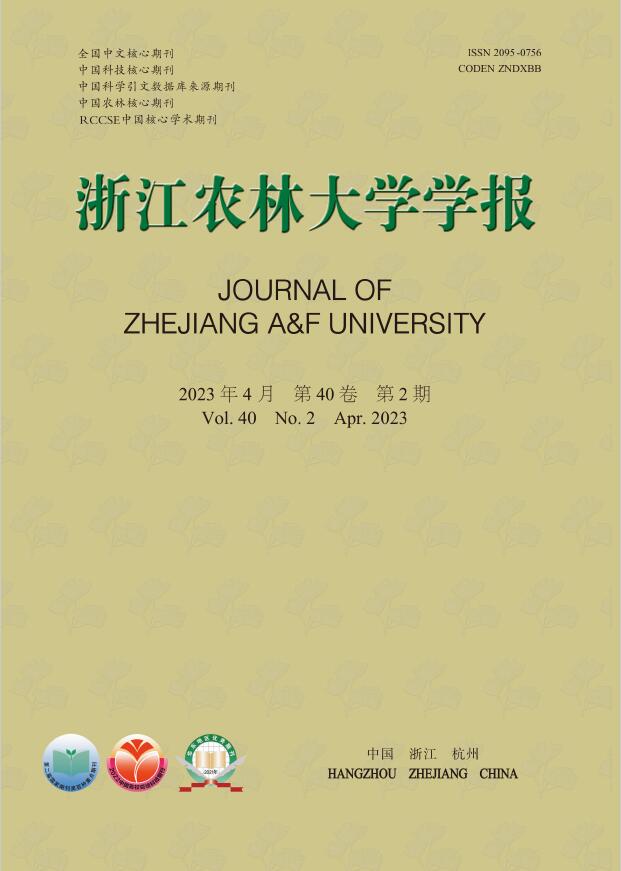


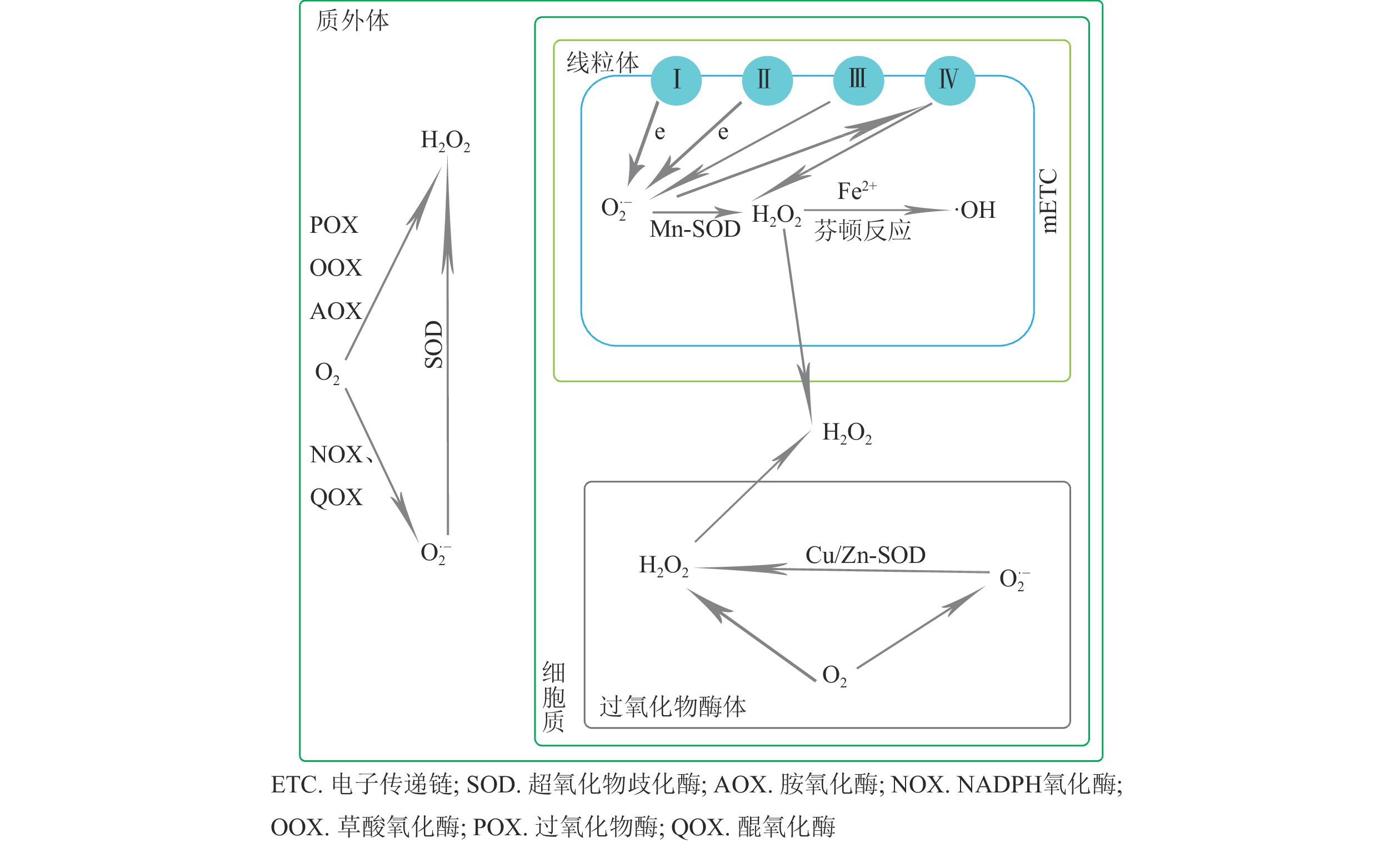













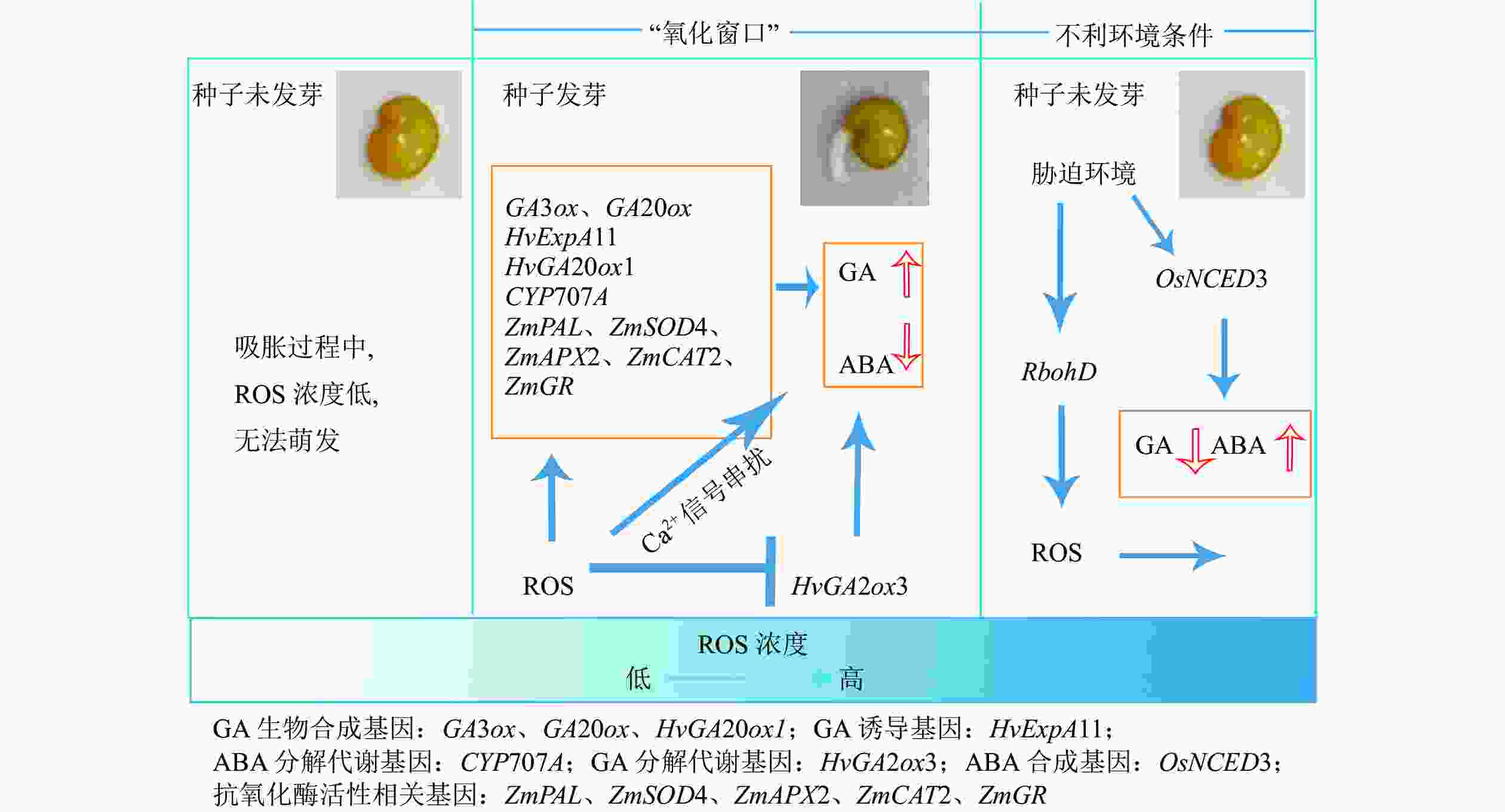
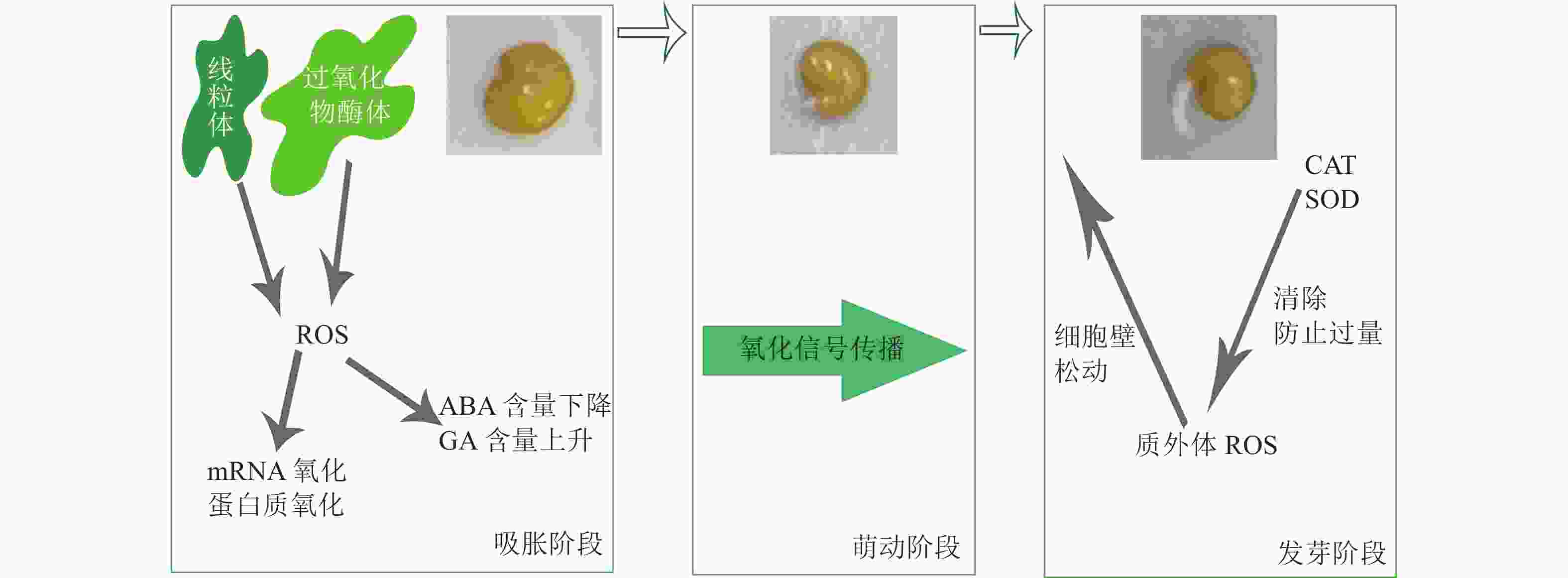


 DownLoad:
DownLoad:
